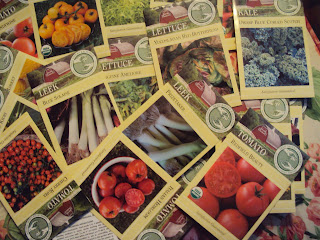01/16/12 Composting
Disclaimer: none of the pictures on this page are mine. My compost pile suffers from an image problem; she feels unglamorous and hates to have her picture taken. Since I believe in mutual repect...I am using instead pix of piles that have no trouble showing their stuff on line.
Compost is the fuel that keeps your garden producing by supplying nutrients to your plants. While many garden centers will sell you all kinds of potting soils (some better than others) and tons of artificial fertilizers, your home-made compost is to artificial fertilizer what grandma's cooking is to Mc Donald.
Why make compost? The smart Alick answer is: because we can. The better answer is : because it is nature's way. Out in the woods and fields, living matters end up rotting and turning back to dirt. Even we are promised such fate. But will we feed tomatoes???
How? Chemistry 101, we need to combine carbon (dry leaves, hay, straw, shredded newspapers) nitrogen( weeds, grass clippings, kitchen refuse), oxygen (air) and water in the right proportions to help that mixture “cook” properly. The heating process allows rapid bacteria multiplication. There the ones doing all the “digesting”.
Proportions: the ideal carbon to nitrogen ratio is supposed to be 30/1 but, in my experience, somewhere around 60% brown (carbon) to 30/40% green (nitrogen) works. You'll never see mother nature out there with a scale checking ratios, you do not need to be too strict either. Do not build your pile higher than four feet to avoid compaction and air exclusion. The fluffier the better!
Where? Depending on your neighborhood covenants, proximity to neighbors and what kind of neighbors, you might have to deal with some restrictions but, if you do it properly, it will not smell and can look just like another pile of leaves.
Bins/Aesthetics: you can go on line and find many ways to build those bins. My favorites have chicken wire on three sides to hold composting matters in place while providing good aeration. The fourth side stay open for you to access. Having two or three of those next to one another allows you to either turn your piles from one to the other or have three piles at a differntly advanced level from new to finished. You will see that some are pretty fancy but, being a minimalist, I just have some construction wire in the back to avoid my stuff spilling into the bamboo growing behind it and that's it.
Practicalities: you do not want it too far from your garden, in a discreet place (no need to make it the center of attention) in the shade and not far from a hose so that you can wet it during dry spell. Dryness kills bacteria, your little invisible workers.
Mistakes to avoid:
--Too much green: you'll be able to tell by the smell. Correction: remix in additional browns.
--Too much brown: less visible; it will just cook much slower. If you're in no rush, no big deal.
--Not enough moisture: slows the process. Just add water!
--Too much moisture: smell will tell you. Mix in more dry leaves, hay, or what you have that is dry. You want your pile to be moist, not wet. If you're not sure, do the squeeze test; if water drips out of it, it's too much.
--Do not put any meat or grease into your pile. Grease does not compost and both attract unwanted visitors.
Fast compost vs slow compost: if you're in a hurry, you can turn over your pile, to add air to speed up the process. You can do that every two weeks and have a finished or semi-finished product in just a few weeks.
If you're like me and prefer the lazy method, you just let your pile sit there until you need it. Mine goes untouched from 6 months to a year. I just keep building next to it .
Uses: straight in your growing beds—you can plant into a 100% compost. As potting soil and as starting medium if you grow your own plants from seeds. For seed starting, I sift mine and mix in a little sand to keep it more friable.
Happy composting!
 Mulch
Mulch The mulch I use is the cheapest one available: wood chips produced by arborists and tree-trimming companies. My favorite is pine chips. Just got a load two days ago and the whole place has that pleasant pine fragrance that air fresheners keep trying to imitate.
The mulch I use is the cheapest one available: wood chips produced by arborists and tree-trimming companies. My favorite is pine chips. Just got a load two days ago and the whole place has that pleasant pine fragrance that air fresheners keep trying to imitate. 





















